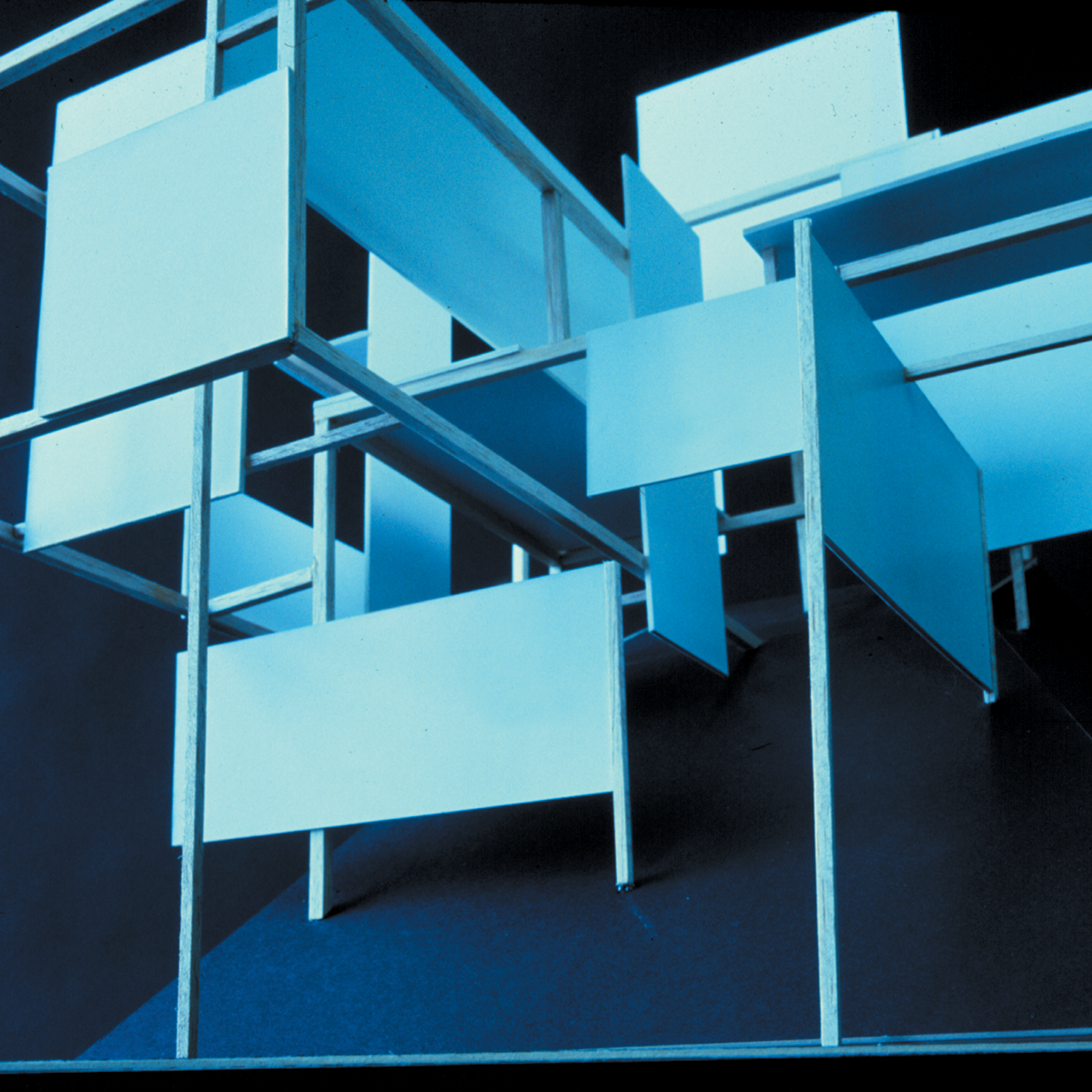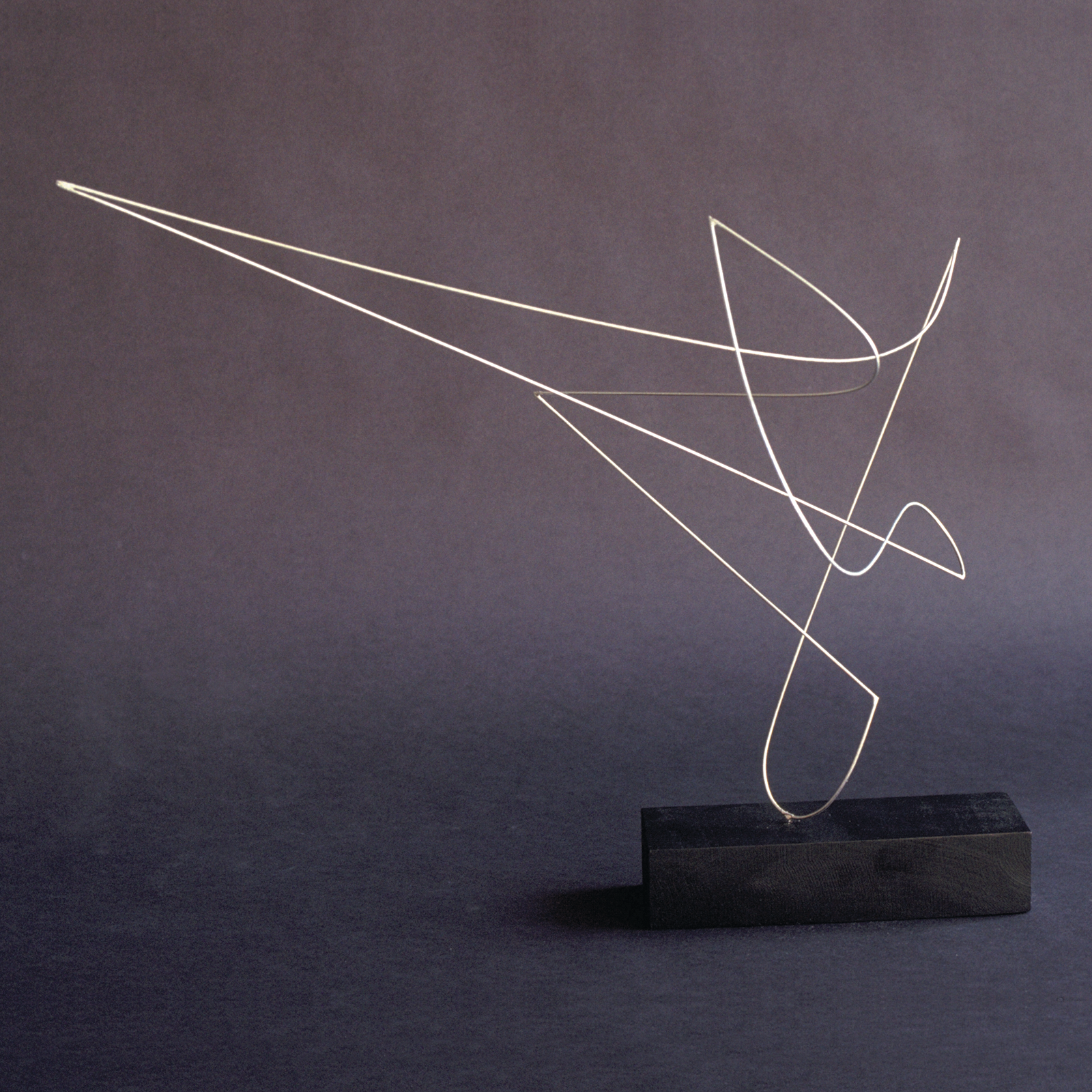“The abstract experience based on construction involves the design and organization of contrasting forms, the new experience of grouping forms to create related movements, and a deeper understanding of the balance of directional forces and of tensional positions in space.”

The construction comprises elements in various materials, which may be used as-found, bent, or shaped and then combined. Materials suitable for your construction include metals, plastic, glass (opaque or translucent), wire, string, rods, sheet metals, wood, stone, plaster, fiberglass, masonite, and other synthetics. Use a combination of linear, planar, and volumetric elements. You need to have many elements in your construction to express the idea. Your construction should be abstract and emotionally expressive.
To generate ideas, think of some of these things and how you might express their essence in a visual form: electricity, communications, chemistry, construction equipment, travel (land/sea/air), music, circus, rodeo, dance, jazz, atomic power, theatre, city. These are ideas that can elicit visual feelings. Use them to develop your feelings for abstraction.
Do some loose two-dimensional sketches on large sheets of paper to get your ideas out. For example, consider the visual aspects of air transport, both the object and the implied motion. Visualize the plane coming up and going down. Then, abstract it further. If you were thinking of a helicopter, you might do a series of hanging spirals over a flat surface. Pull the abstraction out and explore it.
Do some quick three-dimensional sketches in cardboard, wire, or clay. The emotional content is here, and the objective is to capture it. Once captured, it exists in the exercise to be developed. The idea sketches should be an emotional reaction to the theme and a visual reaction that expresses shapes and movement.
Search for the best overall proportions. Do some proportion studies of your three-dimensional sketches to find a successful proportion for the design as a whole.
Make a space sketch establishing the first significant tension between planes and volumes or groups of planes and volumes. The tensional relationship must strongly suggest or imply the proportions of the negative volume and establish a balance of directional forces from every position. It establishes the central theme that will hold the piece together. Once you have organized how the elements sit in space, you can concentrate on the forms.

Working in Final Materials:
Organize volumes, planes, and lines — in that order. Put together the elements of various materials in a pleasant relationship, using the principles from your previous learning. There are two significant objectives here: maintaining the spirit of your idea and learning how to combine materials in a coherent whole.
Establish the dominant, subdominant, and subordinate elements. The dominant element should be beautiful in line and proportion, interesting in character, and in the key position. It should express the movement demanded by the space sketch, that is, help the construction tell its story. The subdominant element should be beautiful in line and proportion and complement the dominant.
Create the first significant spatial relationship between the dominant and subdominant elements. This consists of two or three exciting movements expressing the design and suggesting the negative volume. (Be sure to place planes in two dimensions — do not line them up. Remember, spatial relationships consist of movements.)
Refine the volumes, planes, and lines. Strengthen the spatial relationships and tensions between elements. Examine all lines in your design, including those created by planes. Ask how they relate to each other in space and position. In this problem, the relationship of surfaces to one another — the transition from one surface to another — is significant. You learn how the eye moves across form and space when working with surfaces.
Establish a unity of all design elements and forces. Be sensitive to the joining of elements. This problem has two levels: the visual relationships between elements and how they flow.













